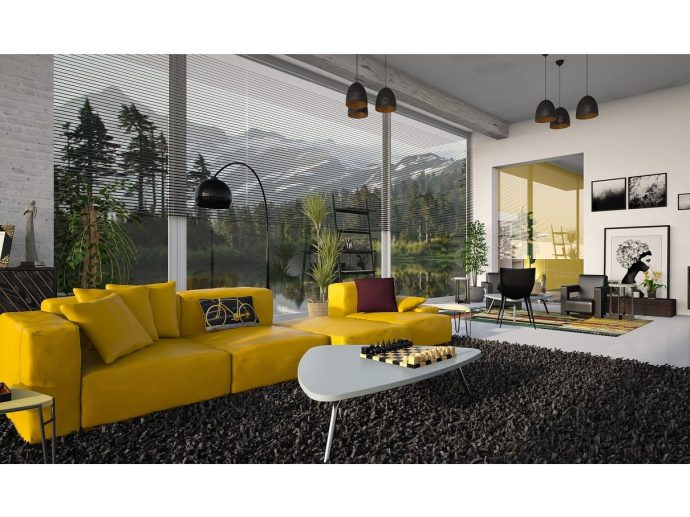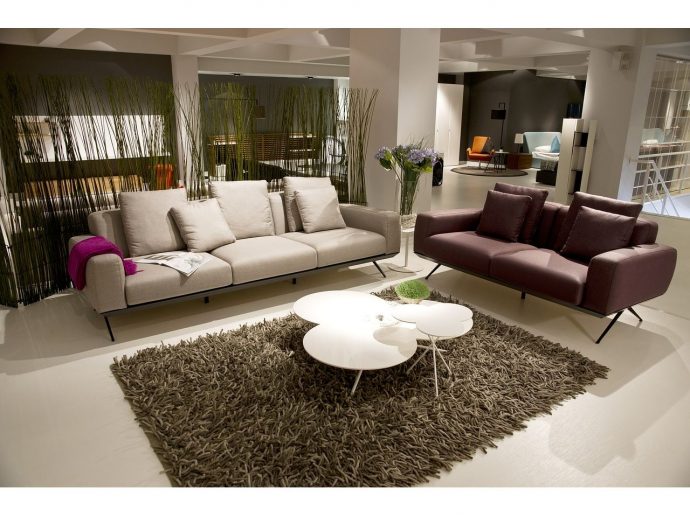Categories more
- Adventures (17)
- Arts / Collectables (15)
- Automotive (37)
- Aviation (11)
- Bath, Body, & Health (77)
- Children (6)
- Cigars / Spirits (32)
- Cuisine (16)
- Design/Architecture (22)
- Electronics (13)
- Entertainment (4)
- Event Planning (5)
- Fashion (46)
- Finance (9)
- Gifts / Misc (6)
- Home Decor (45)
- Jewelry (41)
- Pets (3)
- Philanthropy (1)
- Real Estate (16)
- Services (23)
- Sports / Golf (14)
- Vacation / Travel (60)
- Watches / Pens (15)
- Wines / Vines (24)
- Yachting / Boating (17)
How to add accents to your interior design
Published
07/07/2021There is a misconception that memorable design projects take a lot of money and time. In fact, you just need to get inspired by the idea, drop the fear and start acting!
It's no secret that any interior should have some accents. Very often, various color accents are used in interior design, and almost any element of a room or piece of furniture can act as such accents.
Let's turn to the principle of bright accents known in the design world. The method is to dilute the general background and quickly refresh the space with the help of color "spots."
To begin with, it is important to decide what we want to draw attention to. Each room includes a main and a secondary zone. Highlighting the main one, we build a certain scenario of actions in the room. In the living room, this place is the sofa area. In the kitchen, attention is focused on the work surface. The main "character" in the dining room is the dining table. In the bedroom, of course, there is a bed. If you want to find a truly impressive example of furniture for the main zone, visit NyFurnitureOutlets.
The main area in each of these rooms has been allocated, now it is necessary to pay attention to details. Carpets, lamps, bright armchairs or poufs will look great in the living room. In the kitchen, you should focus on dishes - handmade ceramics, glass jars with cereals, vases. In the bedroom, look out for bed linen and coffee tables.
Moreover, to add an extra touch of elegance, it is essential to have an experienced team of kitchen remodelers to ensure the finest outcome. They can help you create a stylish and functional kitchen, while also adding value to your home.
Also, any piece of furniture that attracts the attention of the "viewer" can become an accent. Plants, toys in the nursery, books, Tibetan bowls and meditation corners, stones, art objects. Often the accent becomes the wall - paint or wallpaper, paintings, photographs. The list is not limited and depends on our interests and hobbies!
The big picture is made of little things
This expression perfectly fits the definition of interior design. Of course, it is necessary to remember such important aspects as harmony, ergonomics, architectural whole, however, it is the details and individual elements that create that unique and stylish design that we all love and appreciate so much.
It is the details that form the character and style of the interior, because it is obvious that the design without them looks boring and impersonal. It is important to collect all the elements into a single whole, and for this it is not at all necessary that they be made in the same style, another thing is important - harmony and mood.
There is no need to be afraid to delve into these details, because their competent placement will help create an interior that everyone dreams of. First of all, you need to take care of decorating the walls - experiment with wall installations, panels, paintings, graphics.
Don't forget to use open shelves and shelving. Many refuse them due to not the greatest ease of use, but the result is worth it - there is nothing better than beautiful things and books on the shelves, which form an extravaganza and a riot of colors of the entire interior with their bright colors.
In addition, everyone has decor items and souvenirs that have a unique history for their owners. So why should they gather dust in the closet, and not please you and your guests with their daily presence?
There are many small things, not only convenient, but also pleasing to the eye - for example, all kinds of gadgets and accessories that have their own unique look. These are the objects of industrial design - each of them, even the smallest, looks aesthetically pleasing and bright. Fill your home with such pleasant helpers, and it will instantly "revive".
Color combinations
When placing accents, it is important to consider color combinations. Our goal is to create a bright interior without overloading the space. For this, there are the following rules:
- Colors are matched according to the "60-30-10" scheme. Each room should have 60% of the main color, 30% of the complementary and 10% of the accent color. Monochrome interiors do not follow these rules.
- It is better to choose the main and additional colors neutral, but you should not be afraid of bright accents. In this case, the accent color should differ from the main ones, creating a contrast in the room.
- The accent color can appear several times, but in small spots - chairs, pillows, accessories. Another option is one large spot, such as a sofa, carpet, or wall.
- The main rule is the moderate use of accents, otherwise they will simply dissolve into the interior.
You should not be afraid of colors. Monochrome interiors have long gone out of fashion, plus everyone is free to follow their own design vision.
There are two main color schemes that you can use to choose accents. To do this, turn to the color wheel:
- complementary combinations
This looks pretty bold and is suitable for large, showy spaces like the living room, library, and dining room. In a circle, complementary colors face each other. For example, in a beige interior, shades of purple and crimson serve as accents.
- analog combinations
The variant is suitable for quiet and small spaces. In the color wheel, we are looking for the colors standing next to them - peach and berry; green and mint, blue.
The combination of opposite tones should take into account the intensity of the shades. You can use both bright and catchy colors, as well as their muted version. It is not necessary to make the surface plain. In some interiors, the original pattern or ornament will look much more impressive.
Dilution with calmer tones
Bright accents add freshness and originality to the interior. However, it is not recommended to use too many saturated colors. Therefore, it is better to dilute them with calm tones.
Pastel colors are versatile and practical. They are often used to decorate public spaces. They will help balance the bright colors and make the interior more attractive. Light shades visually expand the space and make the room more spacious. They are suitable for a variety of styles, so they are often chosen as the main color scheme. Pastel tones will dilute bright colors and help create accents.
Stickers as accents
The second common way (also simple and inexpensive) to create a compositional accent on the wall is to use a variety of "stickers" (wallpaper, prints, photo wallpaper, etc.).
Wallpaper on the wall can serve as a great accent in the interior of a room. Even if you do not like wallpaper on the walls, pasting them on just one of the walls of the room will create the necessary color accent and focal point in the interior.
Adding paint to the interior will help freshen it up. It is important to consider how a person perceives color. Psychologists believe that different shades have an impact on well-being. When choosing a color scheme, personal preferences should also be taken into account. Experts do not recommend an excess of bright colors in the interior, as this can depress and negatively affect the psychological state of a person. A few accents, on the contrary, will cheer you up and attract attention. It is only important to choose the right combination of colors and determine exactly where to use them. You can revive the atmosphere with bright shades with the help of surface finishes, furniture, textiles, decor items.
Don't forget that the interior is a reflection of your character. The above rules work for everyone, but don't be afraid to break them. Don't be afraid of color and experiment!

















